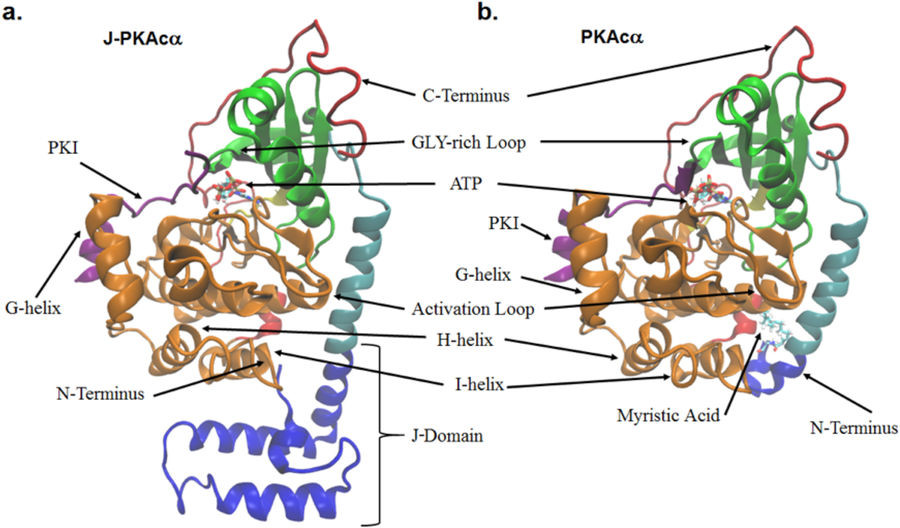Tomasini, M.D.; Wang, Y.; Karamafrooz, A.; Li, G.; Beuming, T.; Gao, J.; Taylor, S.S.; Veglia, G.; Simon, S.M. Scientific Reports, 2018, 8, 720.
In fibrolamellar hepatocellular carcinoma a single genetic deletion results in the fusion of the first exon of the heat shock protein 40, DNAJB1, which encodes the J domain, with exons 2–10 of the catalytic subunit of protein kinase A, PRKACA. This produces an enzymatically active chimeric protein J-PKAcα. We used molecular dynamics simulations and NMR to analyze the conformational landscape of native and chimeric kinase, and found an ensemble of conformations. These ranged from having the J-domain tucked under the large lobe of the kinase, similar to what was reported in the crystal structure, to others where the J-domain was dislodged from the core of the kinase and swinging free in solution. These simulated dislodged states were experimentally captured by NMR. Modeling of the different conformations revealed no obvious steric interactions of the J-domain with the rest of the RIIβ holoenzyme.

